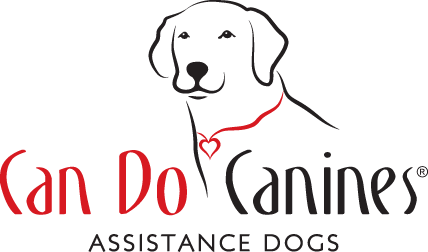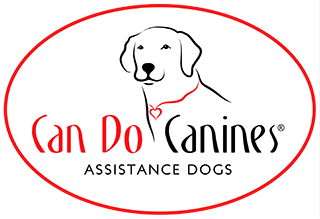Dogs love to jump up! Jumping up on us is the fastest way to get our attention, often given in multiple ways. Jumping usually gets us to look at the dog, talk to them, and to physically touch them when we naturally want to push them off. The dog also gets the added benefit of being closer to our face and easy access to sniff us. All of this is to say that jumping up is a highly reinforcing action for dogs, and our own actions often, accidentally, add even more reinforcement to the behavior.
Management: Using Barriers
One of the hardest parts about changing a behavior is preventing it from happening in the first place. We need to give time for the dog to learn the behaviors we want (four feet on the floor and quiet) and not continue to let the dog rehearse the jumping behavior they already know will reward them. The longer history they have of a behavior being rewarded, the longer it will take to provide enough reinforcement for the new behavior to overtake the old one.
With jumping up on people, this becomes really difficult to do. I think we’ve all had dogs who learn to punch people first, then sit nicely for petting.
The easiest way to prevent the jumping up behavior is to block access to the person they want to greet. This usually means tethering the dog’s leash to a surface, or putting them behind a gate or xpen. A crate can also be used, but since the dog can’t really move at all, it will have less carry over versus a gate or xpen where the dog still has to practice being calm and not jumping up on the gate.
Do this every time family members come home, and guests come over.
Ideally you will not release the dog from behind the barrier until after the initial excitement has died down. This is usually between 5-15min after the person enters the house.
Keep in mind that with guests, you don’t ever have to let the dog greet them. If the dog is too worked up and you know you can’t successfully manage the situation, leave him behind their barrier. The dog doesn’t need to learn that guests coming over are all about pets for him. Most of our dogs do great “in public” when they know they don’t get to greet people. This clear expectation can help at home too when visitors come over to your house. At least until your training starts to catch up, your dog is in a more thinking state of mind, and then you can reevaluate what both you and the dog are ready for.
Excitement with the Release
If most of the excitement is with family members and the dog still struggles when let out of their crate/barrier even after they have demonstrated waiting calmly, then we can manage the situation even further through the use of a leash and/or cookie scatters.
Have a leash hanging up by the crate/barrier and put it on before releasing the dog out. A slip leash (goes over the dog’s head vs clipping to a collar) might be easier if your dog is too wiggly to let you put on a leash. Some dogs may need to be redirected to grab a toy on the release so they have an outlet for their energy. Make sure you have one on the ground near the barrier so you can start attaching a cue such as "Where’s your toy?" to redirect the dog and teach them this new sequence instead of the old sequence of jumping.
Training 4 on the Floor
With your management in place to prevent the dog from jumping, we also need to focus on teaching the dog what behaviors get our attention. Remember the dog wants us to look at them, talk to them and touch them.
Excitement to Calm
With the dog already in a pretty calm mood, slowly start to ramp up your excitement as you talk to them and pet them for 3-5 seconds. If he jumps up, remove your eye contact, take away your hands, and either freeze, turn your back, or take a step into the dog’s space to get them off. When the dog gets back on the floor, wait a second and then resume your play at a slightly calmer level.
If he was successful and didn’t jump up, still pause after those 3-5 seconds and see if the dog can respond to a cue like sit or nudge your hand. Reward with food if needed, otherwise praise and resume your excitement play.
Your goal is to gradually ramp up how much energy and excitement from you that the dog can handle before being asked to do a behavior.
Dealing with Visitors
The eventual goal of this training is to create a space that the dog can be sent to when visitors are at the door, and to remain waiting calmly until released. Upon the release, the dog can greet others but will keep all 4 feet on the floor.
While in training, your dog learned a reliable go mat and maybe even an out, yet can this skill be transferred into your home? This is a great skill to practice and maintain. Set up times that your friends or family come over so you can practice and ask visitors to let you know when they arrive so you can set you and your dog up for success. If your dog breaks their position while you are greeting a guest, shut the door on your visitor and reset your dog.
You may be able to manage just the first part of the goal (the send and stay at the defined area) and be able to release the dog from their “place” once the initial excitement wears off. Be prepared with lots of cookies and a leash!
Helper Zen
A great way to practice the dog’s ability to be calm around other people is to redirect the dog’s attention to food! Help the dog to think more about how to earn a food reward vs how to earn petting. Practice this game with family members first before inviting over helpers who will follow your instructions.
Start by having the dog already in a calm, training brain mode. Have lots of cookies in your pocket and hand over a cookie for your helper to hold in their fist. Your helper will keep their hand low, at the dog’s nose level, and try to keep their hand as still as possible while the dog investigates their food hand. The dog will likely sniff, poke, and even lick the helper’s hand.
Your job is to wait until the dog stops physically mobbing the hand and looks back at you to see what is happening. At that moment, mark yes and back up as you show the dog their reward they earned from you. The dog may not come with you to get their reward but will look back at the helper’s cookie and that’s okay. Wait again.
If you are struggling, try calling your dog or moving around to get the dog’s attention. Only call them once they are not actively mobbing the helper’s hand so that they can hear you.
If the dog is jumping up on the helper, have the helper move their zen hand up to the dog’s nose and lure them back onto the floor. Their goal is to redirect the dog’s focus back to the treat in their hand and away from thinking about greeting. They can also try using their other hand to hold a few inches above the dog’s eyes to prevent the dog from being able to look up at them.
Progress until the dog easily comes to you and you can give the dog multiple treats for staying with you without having them rush back up to greet after swallowing their reward. Your helper can make things harder by approaching you and adding in excitement to their greeting.
Send to a Place
As you think of a place where you would ultimately like the dog to wait when visitors come over, think of not just waiting while the door is open, but a location far enough back that the visitors can come in and not be accosted until everyone is settled.
A raised cot or a mat is going to be the easiest for the dog to learn to maintain position as it’s very obvious when they come off and provides a very clear visual boundary. Another option would be using your out cue and teaching the dog to wait behind an obvious threshold such as in another room.
Make sure you work on the increasing distance and distance for 2 areas of training:
- The Send
- Duration
Can you send the dog to their place when you are 10+ft away? While you have your hand on the door? If you knock or play a doorbell sound on your phone? What if you are holding a pizza box in your hand?! Can the dog wait on their place while you open a door? Can they wait while you greet imaginary people outside? While you bring a pizza box into the house?
Challenge the dog’s understanding before people are involved!
Handling Errors
What if the dog makes a mistake and jumps up on you while you are practicing and they are not behind a barrier so you can retreat? In this situation you want to provide the least reinforcing scenario, knowing that they already received some reinforcement for the act of jumping up.
For some dogs, simply removing your hands, looking away from the dog and quietly waiting is enough. They will put their feet back on the floor when they realize you’re removing attention and you can re-engage them after a brief pause.
Jumping is self-rewarding for a dog. If they are allowed to break their position and jump on people, they just rewarded themselves. Maintain your rules and practice what you expect from them.




